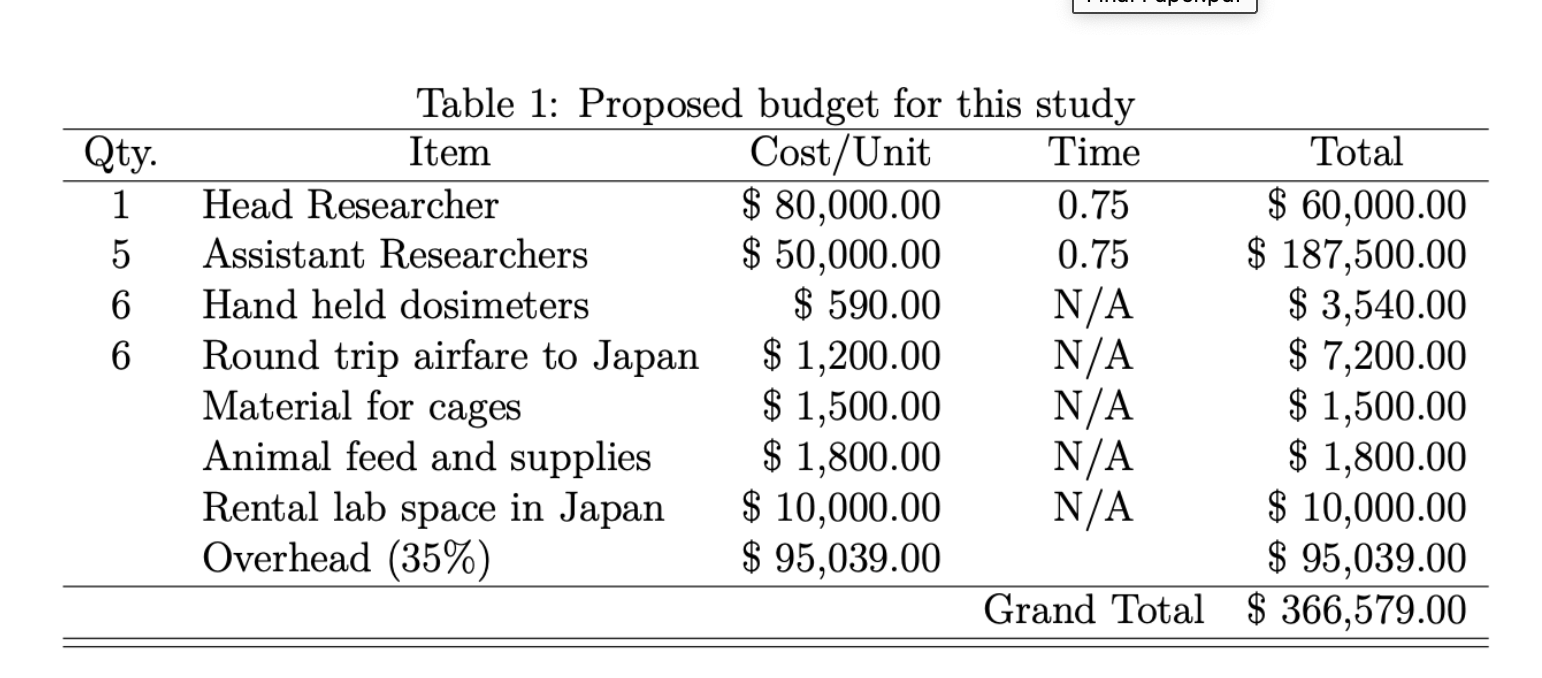Police aggression is not the only arena in which Whites and Blacks are treated differently. In environmental health, too, there are systematic and significant differences. Asthma, caused primarily by air pollution, is one of the most common chronic diseases among children. The mortality rate for African American children is 500% greater than Caucasian children. One in five Puerto Rican and Filipino children have asthma, and the overall cost to the U.S. economy was $19.7 billion in 2007 (EPA 2016). Lead likewise shows disparities by income and race, particularly for Black non-Hispanic children (EPA 2016). Poor housing contributes, and poor housing is higher in Cook County than elsewhere (County Rankings, 2016). Within the county, the West Side of Chicago, which is predominantly non-White (CityData, 2016), showed some of the highest levels of any region (Oyana et al., 2010). There may be no better example of health disparities than the environmental racism shown in examples like the Flint, Michigan water crisis. While there are some individual choices that can be made to avoid common environmental health hazards, the largest sources of such hazards are societal. Once the air has been polluted, it is very difficult for any citizen in a polluted area to mitigate their risk. If you live in a house painted with lead paint, with soil that has been contaminated for decades by emissions from leaded fuel, you can do a few things to protect your children – cover the soil, clean the dust in your house, and avoid anything that will disrupt the lead – but much of the exposure is out of your control, even though you had nothing to do with the lead being there. Reducing lead is often acknowledged an important environmental health goal, including in Healthy People 2020 (2016; Bennett et al., 2016).
It is worth saying that the fact that lead contamination continues to be a nightmare is so because paint and fuel companies vehemently insisted on the safety of lead even while knowing the contrary was true. Lead Wars documents the politics by which this was allowed to happen, as does the authors’ earlier book, Deceit and Denial, which was recommended to me by a Professor of Chemistry at Benedictine, Ed Ferroni. It is shocking to read about the National Lead and Sherwin-Williams discussing the dangers of lead paint to children among themselves in the 1920s, while maintaining a rigorous advertising campaign about safe and sanitary lead paint through the 1960s. All this came to light only because of lawsuits filed against the companies; otherwise, their duplicity may never have been known (Markowitz & Rosner, 2014, p. xii-xiii). There is a reason people do not trust corporate America; perhaps new technologies like GMO foods may prove not to be harmful, but given the guilty history of the chemical industry, one can hardly blame the public, often made unwitting guinea pigs, for having a skeptical attitude.
A quote from the more recent book, is, I think, completely illustrative of the premises of environmental health, environmental justice, and public health more generally, and is therefore worth quoting in full:
If the history of lead poisoning has taught us anything, it is that the worlds we as a society construct, or at least allow to be built in our name, to a large extent determine how we live and how we die. The social, economic, political, and physical environments humans create bring about specific diseases that are emblematic of these conditions. If poverty, for example, and great disparities of wealth result in those on the bottom of the social scale living in crowded conditions without access to pure water, adequate sanitation, or pure air, we can expect infectious and communicable diseases to predominate as they did in nineteenth-century American cities. If we systematically pollute our water and air, we can expect chronic diseases emblematic of the late twentieth century to predominate. (Markowitz & Rosner, 2014, p. xiv-xv)
Similar stories have played out with asbestos, tobacco, mercury, PCBs, and pesticides with terrible impacts on the health of all people, but particularly on those who are most vulnerable.
What causes health care disparities is a very complicated question, addressed by an entire field of study – Environmental Justice. But I would say that the answer ranges from out-and-out racism to economic forces based on externalized costs – costs that are put outside the economic calculus of the market: for instance, the cost of mentally handicapped children – which seem mostly to be borne by the least powerful and influential people in society. In reality, lead poisoning affects many people, but it does so disproportionately, allowing many people to selfishly live in denial that it will affect them.
Solutions
The solution to the lead problem is fairly simple: safely remove the lead. If Public Health as a discipline were able to solve these problems – if they had had the will, the money, and the political power to do something about racial disparities and mass poisonings, they would have by now. It seems to me that this is a result of two far larger problems: one, societal tolerance for the systematic poisoning of our population for profit; and two, racism.
Sadly, we are reminded that Public Health officials are not always the solution; sometimes they are the problem, as seen in the tragic case of the Flint poisoning. In brief, the manager running the city of Flint, rather than paying higher fees for clean water, switched the city over to water from the Flint River, which is highly polluted. It is also acidic, which caused the lead pipes in the town to corrode, releasing high levels of lead into drinking water. Children were harmed – it’s hard to say how many or to what degree. Time will tell, but there were roughly 9000 children in Flint, and no amount of lead is considered safe. What is worse is that even after citizens complained, state and local officials, including Public Health officials, claimed that the water was fine. As Marc Edwards, the civil engineer from Virginia Tech who helped lay bare the scandal, has said, “In Flint the agencies paid to protect these people weren’t solving the problem, they were the problem. What faculty person out there is going to take on their state, the Michigan Department of Environmental Quality, and the U.S. Environmental Protection Agency?… If an environmental injustice is occurring, someone in a government agency is not doing their job” (Kolowich, 2016). Edwards argues that public science is broken, that scientists often pursue their own interests, publications and career advancement, rather than the interests of those they are pledged to serve, particularly those who are powerless.
Primary Prevention
Primary Prevention is obviously superior to secondary or tertiary, in that it is aimed at preventing disease from ever occurring. Primary Prevention is essential in lead poisoning because once a child has been exposed, there is very little that can be done to reduce the risk or mitigate the damage. Those children in Flint are likely harmed for life to varying degrees. Markowitz and Rosner discuss how at the beginning of the lawsuits against the lead industry, and the discussion of remediation, in the 1990s, the aim was to spend $15 billion fixing the problem and ending the epidemic of lead poisoning among children. Instead, because of the pressure of landlords, industry, and others, that plan was abandoned for weak, partial, and ineffective measures that continued to allow millions of children to be poisoned (Markowitz & Rosner 2014, p. 19-20). That said, I often use lead levels as a success story to demonstrate what can be done when policy is changed and prevailing narratives challenged. It is terrible to have to offer a partial success as one of the greatest ones, but this graph counters a prevailing narrative, promoted by the industry and its allies, that poisoning our children – in the many ways we do – is inevitable, almost natural.
Figure 1. Percentage of children 1-5 years old in the U.S. population
with elevated blood lead levels (≥ 10 μg/dL) (Jones et al. 2009).
The problem with this graph is that while we have made progress, recent research has shown that there is no safe level of lead exposure for children, and the action level has been moved down to ≥ 5 µg/dL ((DHHS & CDC, 2011; Lanphear et al., 2005; Chiodo et al., 2007; Jusko et al., 2008; Jedrychowski et al., 2009). The problem with our society is that we are much more likely to tolerate damaging levels of lead in children who are brown, black, or economically deprived.
Opportunities and Barriers
As if we needed further reminder this week that Black Lives Matter. We need to confront the systematic racism that has made Flint possible. Racism has been institutionalized into all our major organizations and professions, and Public Health is no exception. That is the barrier. Changing a culture is not easy. But the opportunities are vast. The cost of IQ points lost to lead alone amount to $192-270 billion per birth cohort, not counting the personal cost of a lower IQ. The return on investment is such that for every dollar spent on lead abatement, $17-221 would be recompensed (Gould, 2009). I have been pleased to see that Health Disparities have been explicitly addressed in Benedictine’s MPH program; whether that is a result of our Benedictine values or national mandates, the change is to be lauded – at least as a start. Changing culture is not easy, but I do believe that education can be part of that. Recognizing and understanding injustice is the first step in working against it, and I hope that in the future we will all be part of remedying this grave injustice.
References
Bennett, D., Bellinger, D.C., Birnbaum, L.S., Bradman, A., Chen, A., Cory-Slechta, D.A…., Witherspoon, N.O. (2016). Project TENDR: Targeting environmental neuro-developmental risks. The TENDR consensus statement. Environ Health Perspect 124:A118–A122; http://dx.doi.org/10.1289/EHP358.
Chiodo, L.M., Covington, C., & Sokol, R.J. (2007). Blood lead levels and specific attention effects in young children. Neurotoxicology and Teratology 29 (5): 538-46.
CityData. (2016). Near West Side Chicago. Retrieved from http://www.city-data.com/neighborhood/Near-West-Side-Chicago-IL.html
County Health Rankings & Roadmaps. (2016). County health rankings & roadmaps. Robert Wood Johnson Foundation. Retrieved from http://www.countyhealthrankings.org/our-approach
Department of Health and Human Services (DHHS) & Centers for Disease Control and Prevention (CDC). (2011). Advisory committee on childhood lead poisoning prevention. Atlanta, Georgia. Retrieved from http://www.cdc.gov/nceh/lead/acclpp/meetings/minutes/acclpp_minutes_final2.pdf
Environmental Protection Agency (EPA). (2016). Children’s environmental health facts. Retrieved from https://www.epa.gov/children/childrens-environmental-health-facts
Gould, E. (2009). Childhood lead poisoning: Conservative estimates of the social and economic benefits of lead hazard control. Environmental Health Perspectives 117(7):1162-1167.
Healthy People 2020. (2016). Healthy People 2020: Environmental Health. U.S. Department of Health and Human Services. Retrieved from https://www.healthypeople.gov/2020/topics-objectives/topic/environmental-health/objectives
Jedrychowski W., Perera, F.P., & Jankowski, J. (2009). Very low prenatal exposure to lead and mental development of children in infancy and early childhood. Neuroepidemiology 32 (4): 270-78.
Jones, R.L., Homa, D.M., Meyer, P.A., Brody, J.F., Caldwell, K.L., Pirkle, J.L., & Brown, M.J. (2009). Trends in blood lead levels and blood lead testing among U.S. children aged 1 to 5 years, 1988-2004. Pediatrics 123 (3): e376-e385.
Jusko, T.A., Henderson, C. R., Lanphear, B.P., Cory-Slechta, D.A., Parsons, P.J., & Canfield, R.L. (2008). Blood lead concentrations < 10 µg/dL and child intelligence at 6 years of age. Environmental Health Perspectives 116 (2): 243-8.
Kolowich, S. (2016). The water next time: Professor who helped expose crisis in Flint says public science is broken. The Chronicle of Higher Education, February 2. Retrieved from http://chronicle.com/article/The-Water-Next-Time-Professor/235136
Lanphear, B.P., Hornung, R., Khoury, J., Yoton, K., Baghurst, P., Bellinger, D.C., … Roberts, R. (2005). Low-level environmental lead exposure and children’s intellectual function: An international pooled analysis. Environmental Health Perspectives 113 (7): 894-9.
Oyana, T.J., Margai, F.M. (2010). Spatial patterns and health disparities in pediatric lead exposure in Chicago: Characteristics and profiles of high-risk neighborhoods. Prof. Geogr; 62:46–65. doi: 10.1080/00330120903375894.
World Health Organization (WHO). (2014). 7 million premature deaths annually linked to air pollution. World Health Organization. Retrieved from http://www.who.int/mediacentre/news/releases/2014/air-pollution/en/













